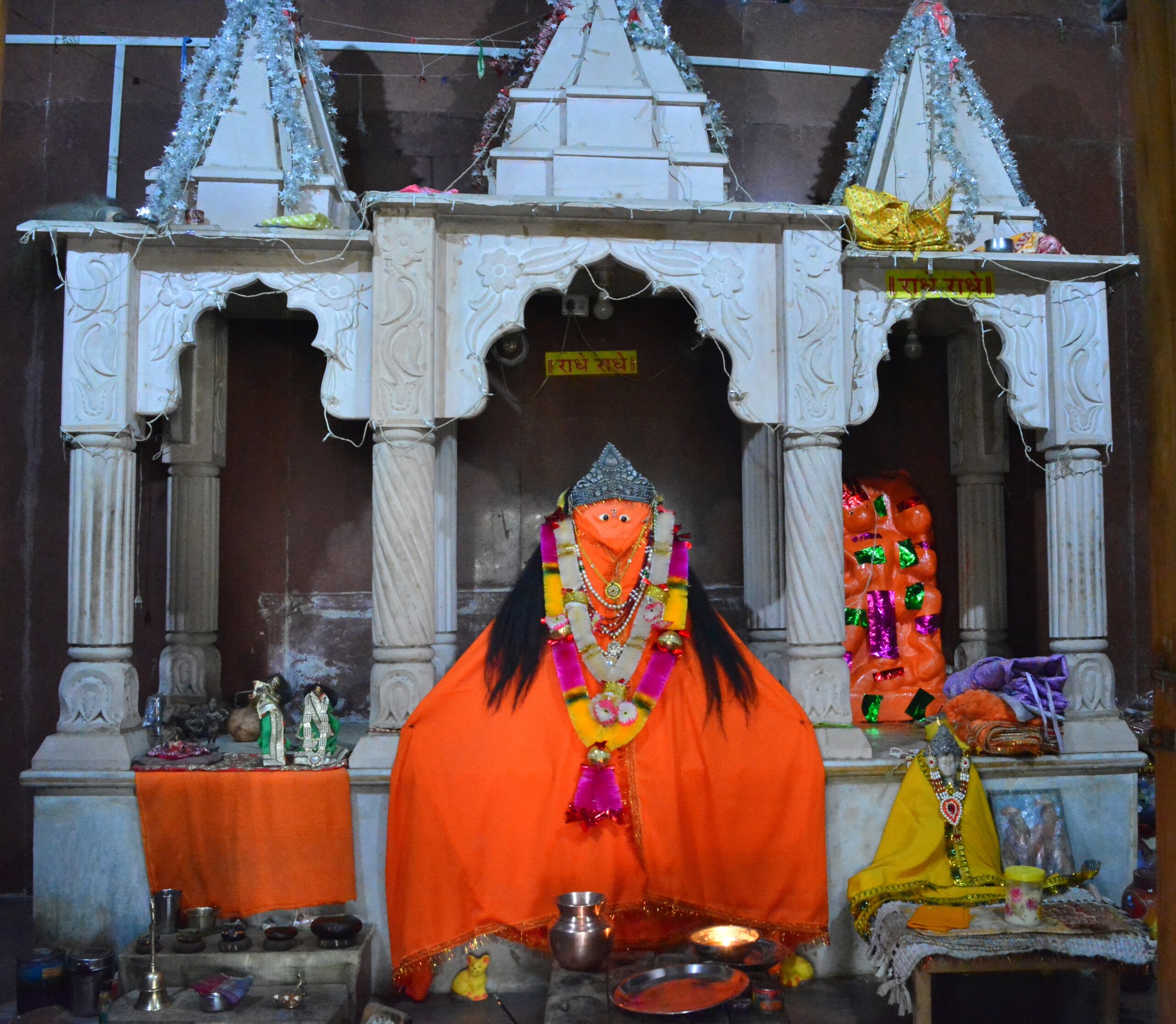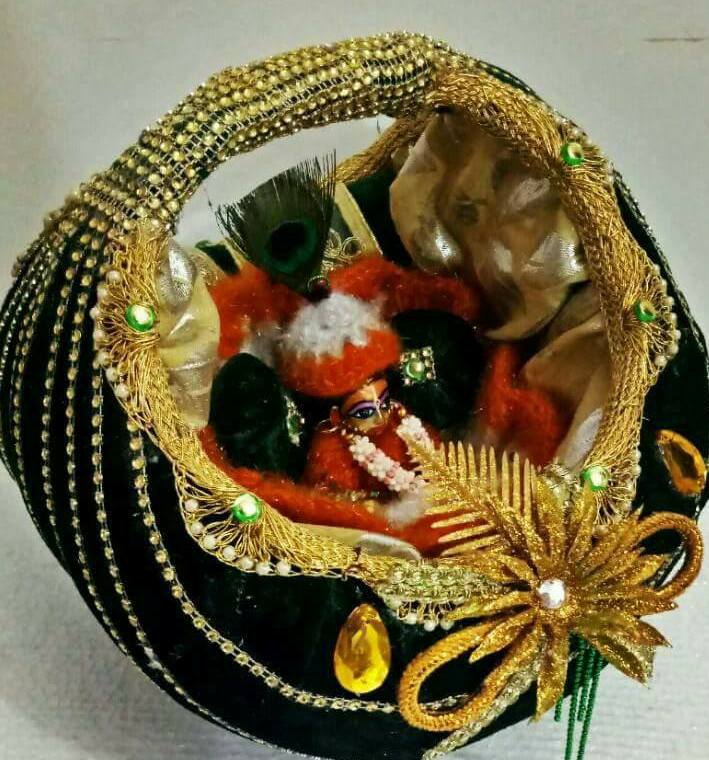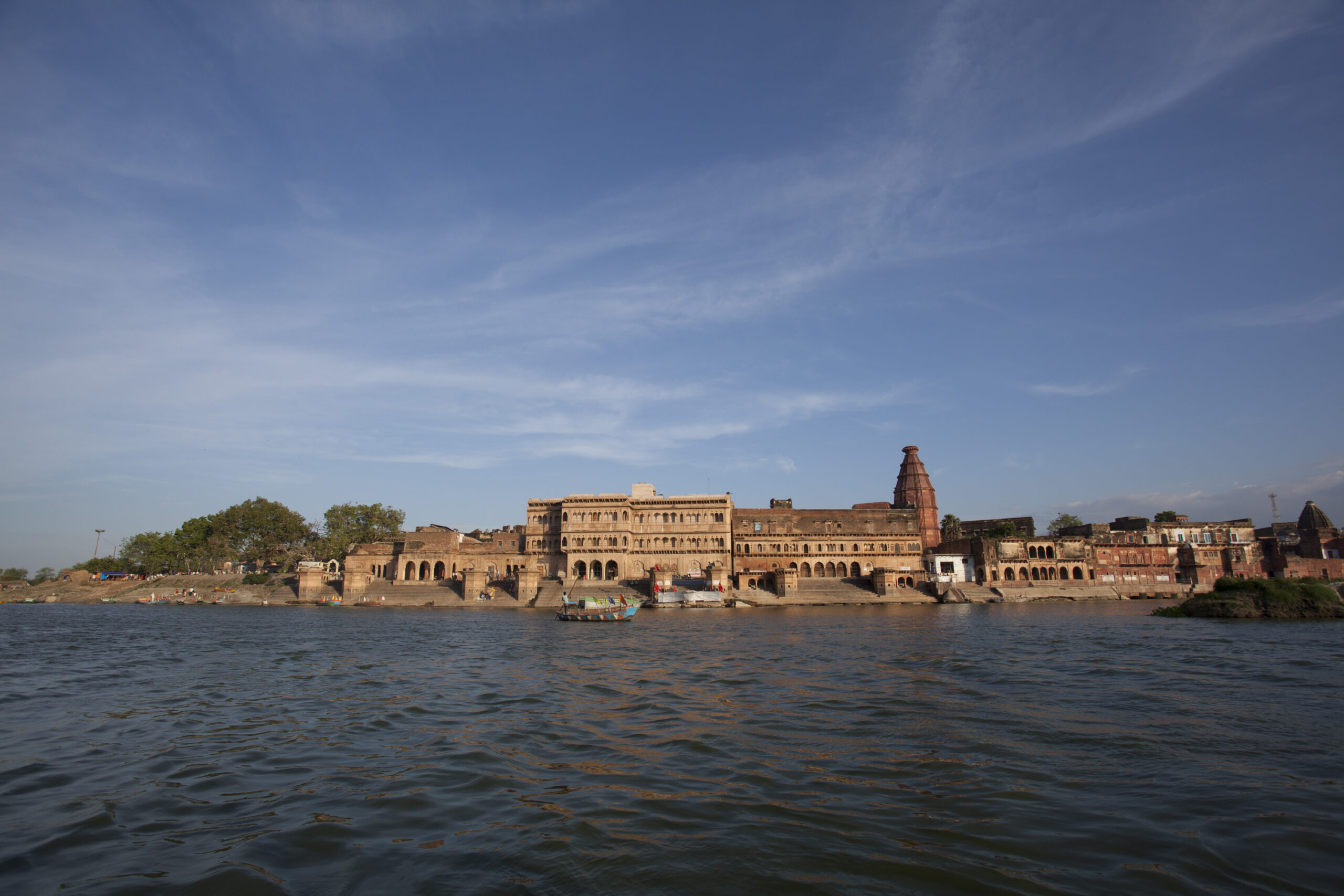(by Shri Rajendra Ranjan Chaturvedi): With the deepening of human thought, and change in perception from gross to subtle, people started gravitating towards Shakti Sadhana. From this point of view, humans have been Shakti-Upasakas since the time they evolved on this planet. Whether it was the deifying of the sun, moon, earth and dawn or worshipping the universal Shakti sustaining and driving them all, all these facts can be verified easily in the Vedas, Upanishads, Brahmanas, Puranas and other Shastras. The presence of Prakriti with Purusha (Maya with Brahman, Shiv-Shakti, Vishnu Lakshmi, Ram-Sita) is noted every-where.
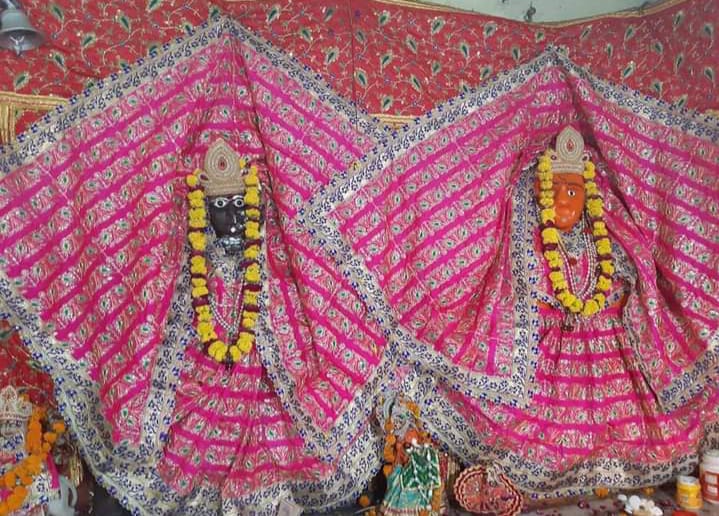
Conceptualising ‘Matrdhatri Brajbhoomi’ from this point of view brings many hidden truths begin to surface.
The Shaakt Upasana granthas have geographically delineated three parts in India and Asia with respect to Shakti Upasana: Vishnukranta (from Vindhyas to Chhatgram, north-east India), Rathkranta (north-west part; Vindhyas to Tibbet) and Ashwakranta (from Karatoya river to Java). Being located at the confluence of the three, Braj is replete with a vibrant range of Upasana Vidhis and deity forms.
Among the ‘Dwadash Upasakas’ of Shri Shodashi Vidya, Rishi Durvasa has a special connection with Braj. Braj was also the ‘Sadhana Sthali’ of Vedvayasa Krishna Dwaipayana who was a Bhuvaneshwari Vidya Upasaka. Similarly several Brahmarishis and Rajasrshis have done ‘upasanas’ of Yogmaya Gayatri, Kukuda, Chandika, Ambika, Vimla, Bhadrakali, Ekanansha, Rohini, Revathi, Vasumati, Sheetla, Surabhi, Gauri. Katyayini, Shakambari, Hiranyakshi, Swaha, Swadha, Kala, Kashtha, Sarasvati, Savitri here, and started new Shakti lineages from this land.
The ‘Upanishads’, ‘Varah Puran’, ‘Brahma-vaivarta Puran’, ‘Padma Puran’, ‘Mahabharata’, ‘Devi Bhagwat’, ‘Shrimad Bhagvatam’ and other Vishnava literature contain many references to Shakti Upasana in Braj such as the upasana of Katyayini Devi done by the ‘Brajbalas’ to obtain Krishna, Durga Puja of the Yadavas, or Shivamba Upasana by Rukmini. According to the Mahabharata, Arjuna along with Yudhisthara and others worshipped Ekanansha. In the ‘Bhishma Parva’, seeing the army of Duryodhana, Shri Krishna says to Arjuna :
शुचिर्भूत्वा महाबाहो संग्रामाभिमुखे स्थितः।
पराजयाय शत्रूणां दुर्गास्तोत्रमुदीरय।।
A reference is found in the ‘Padma Puran’ where Shri Krishna tells Arjuna to do ‘archana’ for Rajarajeshwari Tripurasundari when the latter asks him for the secret of Shiv-Viranchi. After following Krishna’s words, Arjuna was able to get darshan of Bhagvati Shodashi on Chintamani Mandap’s ‘Ratnavedi’. With Devi’s permission he took refuge in ‘kulkund’, and obtained the right (adhikara) for ‘Nyasa Mudra’ and ‘Para Bala Vidya’, thereafter entering Nitya Vrindavan Dham which is situated above Goloka. Further, to understand the secret of that Nitya Vrindavan Tattva (essence), he bathed in the 1000-petal lotus-shaped pond.
As per the ‘Narad Panchratra’ Swayam Shri Krishna did Upasana of Para Prakriti Radha’s ‘Shadakshari Mahavidya’
षडाक्षरी महाविद्या श्रीकृष्णेनैव सेविता।
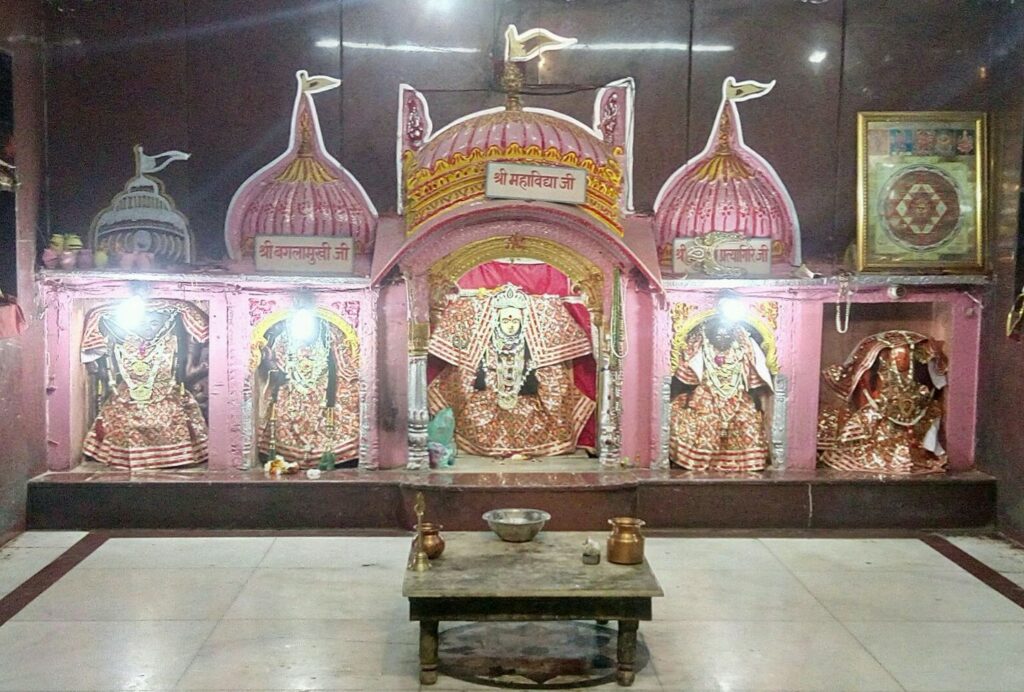
In the same way, numerous evidences of Shakti Upasana in Braj during and before Krishna’s time are found in many texts. In the story of ‘Shankchuda-Uddhara’ in Shrimad Bhaagvat it is said
एकदा देवयात्रायां गोपाला जात कौतुकाः।
अनोभिरनडुद्युक्तैः प्रययुस्तेअम्बिका वनम्।।
तत्र स्नात्त्वा सरस्वत्यां देवं पशुपतिं विभूम्।
आनर्चु रर्हणैर्भक्त्या देवीं च नृपतेअम्बिकाम्।।
Apart from evincing the prevalence of Shakti Upasana in ancient Braj, the above verse also elucidates the significance and timelessness of Ambikavan.
The circumference of Mahavidya and Chamunda in the North-west of present–day Mathura is called Ambikavan. In fact in the entire stretch from Bhuteshwar Mahadev to Gokarneshwar, where the Sarasvati Sangam is present, there are many ancient temples of Durga, Chandi, Pataleshwari, Mahavidya, Bagla, Siddheshwari, Ekanansha, Pathwari, Masani, Yogmaya and Chamunda which indicate that Braj was an ancient centre of Durga Upasana. Archaeological evidences suggest that it must have been extremely prosperous during those days.
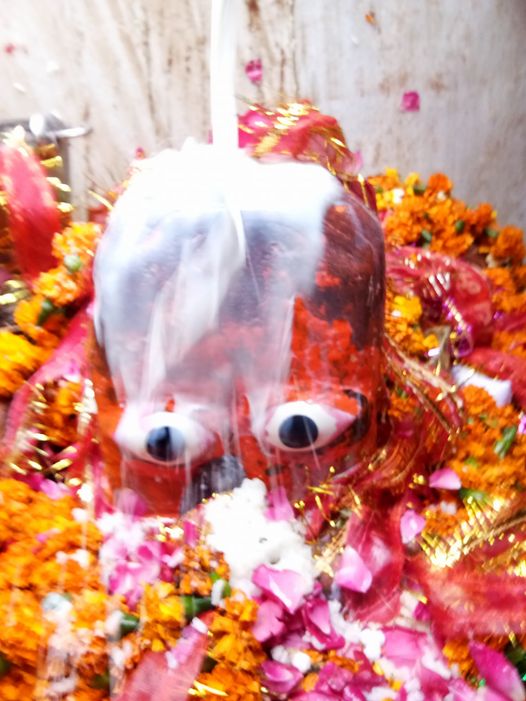
The Vedic river Sarasvati used to flow through this stretch of land before merging with the Yamuna. The story of King Prabhanjan mentioned in Sarasvati Mahatmya of Padma Puran points towards the geographical location of Ambikavan.
According to Varah Puran, Vaishya Vasukarna and his wife worshipped here to obtain a son who went on to restore the temple of Gokarneshwar Mahadeva and got a huge garden built near it. After instructing his disciples Asit, Deval Vaisham-payana and Jaimini to propagate dharma throughout the country, when Vedavyasa Krishna Dwaipayana came to know that his mother Satyavati had married King Shantanu, he started living in an ashram at the banks of Sarasvati here and did Bhuvaneshwari Upasana.
In his book ‘The Sarasvati and the lost rivers of Indian Desert’, Archaeological expert C.F. Oldham says that the Sarasvati used to merge with the Yamuna earlier. The Ganga and Yamuna ‘sangam’ occurred after its (Sarasvati’s) flow dried up. However, today only a small pond, called Sarasvati Kund remains where stands a grand temple of ‘Sarasvati-Ganesh’. A small stream of water from Bahulavan flows into it. It is referred to as the Sarasvati drain by the locals.
Braj is glorified in many places in various Shakta texts. Listing the 108 Shakti Kendras in Bharatavarsha in the Devi Bhagvat, Vedavyasa accepts the presence of Mrigavati in Yamuna, Sugandha in Madhuvan, Shivananda in Shiv Kund, Radha Peeth in Vrindavan and Devaki Peeth in Mathura.
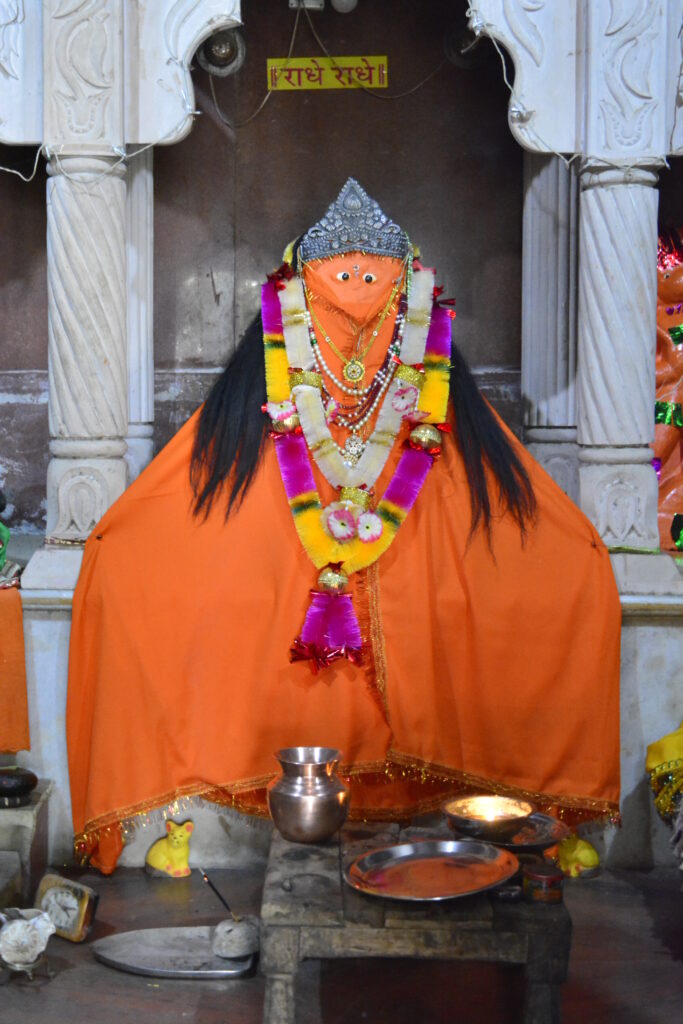
According to Tantra-chudamani, which mentions the various body parts of Devi as 51 Shakti Peethas, the foremost ‘Kshatrapeeth’ of Bharatvarsha is also in Braj. It says that Braj has been called ‘Kshatra-peeth’ because it is the centre of ‘Ksha’ syllable which is the ‘Sumeru’ of the Varnamala’. The importance of this ‘Peetha’ is due to Bhagvati Sati’s hair strand which fell here when Vishnu used his Chakra to split Her burnt corpse being carried by Shiva.
It can be said that the ‘Shaktacharyas’ consecrated ‘Bharat Bhumi’ as the ‘Shri Vrigraha of Jagadjanani Rajarajeshwari’ while envisioning various ‘Shakti Sadhanas Kendras’ as the different body parts of Devi, of which Braj is venerated as her hair strand.
This hair stand may be Bhagvati Chamunda based on oral history, the beliefs of many upasakas, and the form of the deity (idol). Apart from that, even Tantrachudamani says :
भूतेशो भैरवस्तत्र उमा नाम्नी च देवता।
Every ‘Mahapeetha’ has a ‘Bhairav’. In Braj it is Bhuteshwar Shiv. The Bhagvati temple is eight cornered (‘Ashtakon’), with the deity being situated in a triangle (‘Trikona’). It is said that this was the ‘Sadhana Bhumi’ of Maharishi Shandilya. It used to be surrounded by high hills on the four sides. Above a nearby hill, even today, is the abode of ‘Uchistha Ganapati’ signifying that this place was the centre of ‘Tantropasana.’
The practitioners of ‘Tantra-Mantra’ believe that of the ‘Dasa Maha-vidyas’ Chamunda Temple belongs to Ma Chinnamasta. It is then difficult to say how this place came to be known as Chamunda or Chamad. It is possible that the Shastric name and form (Uma) may have been something else, but later it may have become famous as Chamunda because the worship of ‘Chamad’ was prevalent in many places in Braj. However, the meaning of the word Chamunda derived from ‘चामुंडा पयति उज्जनयति न विषयी कुरुते, ब्रह्म मात्र विषयणीति यावत्’ is Brahmavidya. There are many stories of Her in the Puranas of which this is one..
चंडमुंडौ हतौ यस्यात् तस्मात्ते नाम कालिके।
चामुंडेति सुविख्यातं भविष्यति धरातले।।
On a high hill just opposite the Chamunda temple is the temple of Mahavidya which was established by the Pandavas. It was built in its present form by the Marathas and renovated by Shri Sheelchandraji Maharaj. The temple has deities of Bagla, Mahavidya and other Devis. The form of Mahavidya in the centre was envisaged keeping in mind Neela Saraswati…
घण्टा शिरः शूलमसि कराग्रैः संविभ्रतीं चंद्रकलावतंसाम्।
प्रमध्नतीं पादतले पशुं तां भजे मुदा नीलसरस्वतीशाम्।।
Some people believe that Nandbaba did Jagdambarchana at Mahavidya. This temple holds great significance among Shakti Upasakas. Venerable Upasakas like Samrajya Dikshit (who lived with a Lion) stayed here. Many evidences of Shri Vidya Upasana have been found in and around this temple, mainly near the old wells. On one of the wells it is inscribed “This well was dug by a landlord from Govind-pur for Shri Ji’s Yantraraj bhog and archana”.
According to the ‘Varah Puran’, in earlier times there used to be a temple of Ekanansha at this location.
एकनंशा ततो देवीं यशोदां देवकी तथा।
महाविद्येश्वरीं देवीं मुच्यते ब्रह्महत्यया।।
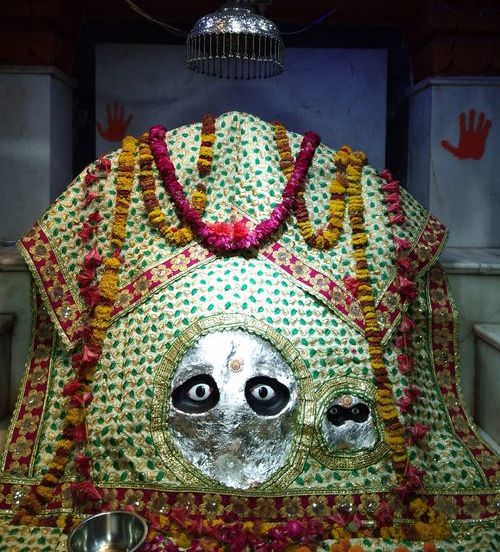
The worship of ‘Ekanansha’ was prevalent since ancient times in Braj. This can be verified in the Mahabharata, Harivamsha, Kashyap Samhita, Angvijja, Vishnu Dharmottar, Brihatsamhita, Devi Bhagvat, Brahmavaivarta, Agni, Kurrma, Padma, Brahm and Vayu Puran.
गौतमी कौशिकी आर्या चण्डी कात्यायनी सती।
कुमारी यादवी देवी वरदा कृष्ण पिंगला।।
बर्हिध्वजा शुल धरा परम ब्रह्मचारिणी।
माहेन्द्री चेन्द्र भागिनी वृष कन्यैक वाससी।।
अपराजिता बहु भुजा प्रगल्भ सिंह वाहिनी।
एकानंशा दैत्य हनी माया महिष मर्दिनी।। (वायु)
सा परा भगिनी विप्र कृष्णस्य परमात्मनः।
एकनंशेन विख्याता पार्वत्यंश समुÚवा।। (ब्रह्मवैवर्त)
From the above verses it is evident that ‘Ekanansha’ was Shri Krishna’s sister ‘Mahamaya’ or ‘Yogmaya’ who in the form of ‘Vindhyeshwari’ was the ‘Kula Devi’ of the Yadavas. Though she was worshipped all over India, Mathura was the main centre of ‘Eka-nansha Upasana’.
Excavations in Mathura and nearby regions have revealed many ‘murtis’ of Eka-nansha placed between Balarama and Krishna (एकानंशा कार्यां देवी बलराम कृष्णयोर्मध्ये) They are displayed in the Mathura Museum. Other than Ekanansha, ‘murtis’ of Saptamatrikas, Mahish-mardini, Ganapati in various ‘mudras’ and Bhairavas were also excavated from this region.
In addition to the ubiquitous relevance of Surabhi, Revathi, Gauri, Rohini, Yashoda, Chandrabhaga, Lalita and Radhakund in Braj, there are temples of Mukhar Gop Kuldevi Mukhrai near Adeeg, Manasa Devi on Griraj Shila, Yashumati-Sheetala, Manasa, Vrinda, Pathwari, and Gomti (Kameshwar Shiva is present nearby), Ladliji temple in Barsana, Naubari Chaubari near Barsana, Sanchauli Devi in Sanchauli, Yantrashila in Sanket and Sanket Devi, Saanwari Devi in Seyigaon, Anandi Vandidevi in Lohvana (who was worshipped by Garga-charya), Mahishmardini in Giridharpur, Kaila Devi on Gayatri Teela in Mathura, Gayatri, Mathura Devi and the Kula Devi of Mathura SamaVedis, Charchika Peetha.
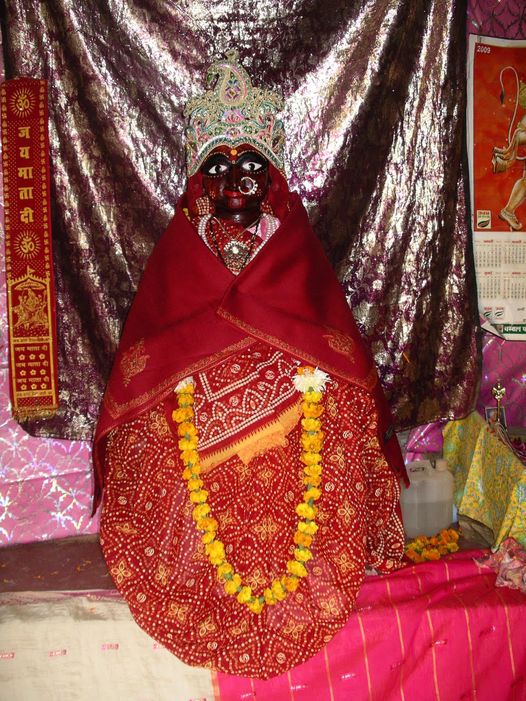
Various Bhairava temples belonging to Gorakhnatha Samparadaya, and Ganapati temples built for Tantropasana are also found.
Vrindavan is still the main centre of Shakti Upasana although Shakti worship here has been merged with the many forms of Vaishnav and Bhakti Marga Sadhanas in such a way that it is difficult to make out the distinction. Vrindavan’s tradition is that of the Aradhana of ‘Para Prakriti Radha’. On the walls of Seva-Kunj is written the following verse:
लसत लाल अरु लाडली ललितादिक सब पुंज।
जगदम्बा सेवित सदा सो यह सेवा कुंज।।
The Bhakti saints of Braj have given beautiful descriptions of Shri Yogpeetha Upasana in Braj where Shri Radha-Madhav sport in the middle of the 1000-petalled lotus; petals being the Sakhis. The ‘Radha Tattva’ described in Shri Haridas’ Kelimaal is that form of (अनन्तकोटि ब्रह्माण्ड नायिका भगवती ललिता) which demonstrates the ‘Shakti Bhaav’ of Braj.
In a way it can be said that ancient Braj was a seamless and glorious blend of Vaishnava, Shaiva, Ganpatya, Saur, and Shakta Upasana. That the ‘Naval Nagari’ of Braj, Shri Radha is none other than the (तथा ब्र्रह्मस्वरूपा च निर्लिप्ता प्रकृतेः परा) of Shakta Granthas is an irrefutable fact.
Even the folk culture of Braj is steeped in ‘Shakti Aaradhna’. The worship of ‘Sandhya’ (‘Saanjhi’) and Yamuna is Braj’s unique glory. Along with Radha, Yamuna and Vrinda Devis, ‘Mahakavis’ like ‘Gwaal’ have also praised Bhagvati in the Tantric way, thus…
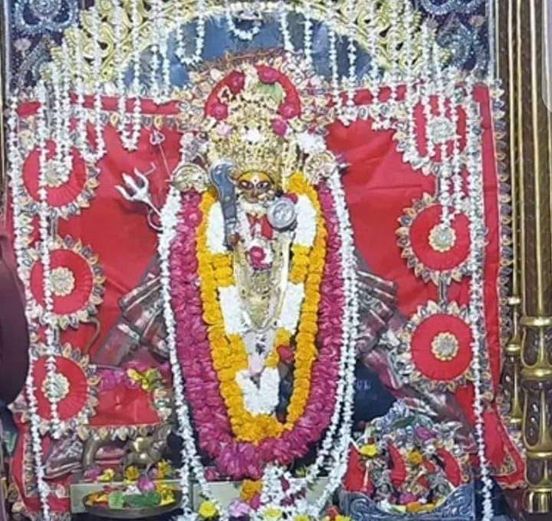
सोने के सिंहासन पै राजै अरुनंबर लै,
वंदन वरन जन सुषमा उदोत हैं।
मौतिन के भूसन सु दक्षन अधोर्ध कर,
इषु अरु अंकुस त सरसत जोत हैं।
ग्वाल कवि बाएँ एक कर धनु एक पास,
त्रिध्ग प्रसन्न मुख क्रीट मनि गोत हैं।
राज-राज ईसरी श्रीविद्या सोडसी कौ सुभ्र,
ऐसो ध्यान धर भवपार जन होत है।।
After composing the ‘Shakticharitamrit Kavya’, Baba Shivaprakash ji also wrote, Rajrajeshwari Stotram, Durga Dhyaan Mala, Tripursundari Stotram, Bala Shatpadi, Tara Shatpadi, Tripura Neerajanam in Sanskrit. Similarly, Braj’s great Tantropasaka Shri Sheelchandra Ji Maharaj laid down the principles of Peetambara Puja, and Gopalasundari Puja, while Shri Badriduttji Maharaj gave Vidyarchana Paddyati.
Among the contemporary Shakti saints of Braj, Shri Rangduttji, Gangduttji, Shri Sheelchandraji Maharaj, Vaneshilal Ji, Vasudevji Maharaj, Keshavdevji Maharaj, Damodarji Maharaj , Badridutt Maharaj, Vrindavanji Maharaj, Batuknathji, and Vidurduttji are notable.


